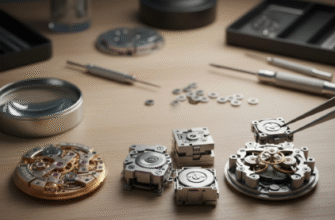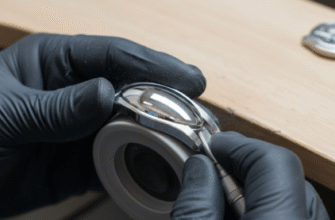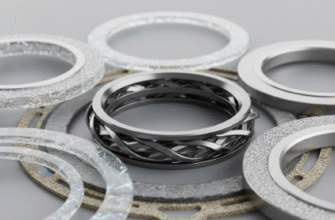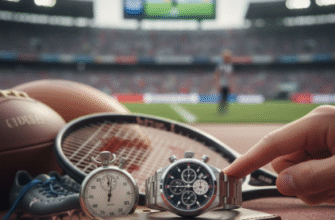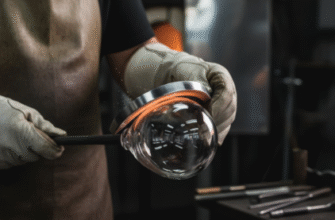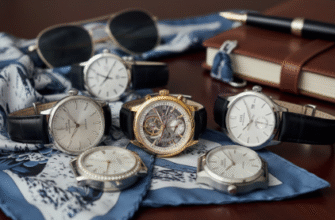Deep within the intricate metallic landscape of a mechanical watch movement, a component so fine it resembles a strand of spider silk tirelessly breathes life into the mechanism. This is the hairspring, or balance spring. Its rhythmic coiling and uncoiling, happening multiple times per second, dictates the very pace of time told by the hands on the dial. For centuries, this tiny spring has been the single most critical element for precision, and its evolution from simple steel to futuristic composites is a fascinating story of the relentless pursuit of perfection, blending high-end metallurgy with cutting-edge materials science.
The Ideal Properties of a High-Performance Hairspring
The job of a hairspring sounds simple: to provide a restoring force that makes the balance wheel oscillate back and forth at a perfectly regular rhythm. Achieving this under real-world conditions, however, is an immense technical challenge. An ideal hairspring must possess a very specific set of properties, each one crucial for maintaining accuracy against the onslaught of daily life.
Isochronism: The Heartbeat of Accuracy
The most important property is isochronism. This means the spring must ensure the balance wheel completes its oscillation in the same amount of time, regardless of the amplitude, or the width of its swing. When a watch is fully wound, the balance has a wide, powerful swing. As the mainspring unwinds, this swing becomes smaller. A perfect hairspring ensures that both the wide and narrow swings take the exact same duration, preventing the watch from speeding up or slowing down as its power reserve depletes. This consistency is the bedrock of a chronometer-grade timepiece.
Fighting the Invisible Foes: Temperature and Magnetism
Physics dictates that the elasticity of most metals changes with temperature. As a watch warms up on your wrist, a traditional metal hairspring becomes slightly softer and less springy, causing the balance to oscillate slower and the watch to lose time. Conversely, in the cold, it stiffens and speeds up. Another pervasive enemy is magnetism. Everyday objects like smartphones, laptops, and speakers can imbue a traditional steel hairspring with a magnetic field. This causes its delicate coils to stick together, drastically shortening the spring’s effective length and making the watch run incredibly fast, sometimes by hours a day.
Withstanding the Test of Time: Shock and Fatigue Resistance
A hairspring in a modern watch oscillates over 250 million times a year. It must be crafted from a material that can withstand these billions of cycles without degrading, a property known as fatigue resistance. Furthermore, it needs to be robust enough to handle the inevitable shocks and bumps of daily wear. A physical jolt that slightly deforms the spring’s shape can throw the entire system out of regulation, permanently affecting its timekeeping ability.
From Steel to “Invariable” Super-Alloys
The earliest hairsprings, pioneered in the 17th century, were made of carbon steel. While a remarkable invention, they were highly susceptible to all the problems listed above: they would rust, change their properties with temperature, and were easily magnetized. Watchmakers devised clever but complex solutions, like the bimetallic split balance wheel, which would change its shape to compensate for the hairspring’s thermal error. But the real breakthrough came from tackling the material itself.
Around the turn of the 20th century, Swiss physicist Charles Édouard Guillaume dedicated his life to studying nickel-iron alloys. He discovered a specific alloy that had a near-zero thermoelastic coefficient, meaning its elasticity remained almost constant across a wide range of temperatures. He named it Elinvar, a contraction of the French élasticité invariable (“invariable elasticity”). This invention was so significant for precision instruments that it earned him the Nobel Prize in Physics in 1920. Elinvar eliminated the need for the complicated bimetallic balance, revolutionizing watchmaking.
Elinvar was just the beginning. Over the following decades, it was refined and improved upon, leading to the creation of alloys like Nivarox (a German acronym for Nicht Variabel Oxydfest, or “Non-Variable, Rust-Resistant”). Nivarox became the industry gold standard for over 70 years. It’s a complex, non-magnetic alloy typically composed of iron, nickel, and chromium for corrosion resistance, with small but critical additions of titanium and beryllium to enhance its hardness and elastic properties. Nivarox provided a fantastic all-in-one solution, offering excellent stability, antimagnetism, and durability.
Even microscopic imperfections or deformations in a hairspring can have a dramatic impact on a watch’s timekeeping. A slight bend, a speck of dust, or residual magnetism can introduce errors amounting to several minutes per day. This is why the manufacturing and handling of these components are performed in highly controlled, cleanroom-like environments by master watchmakers.
The Silicon Revolution
For most of the 20th century, metal alloys were the only game in town. Then, at the dawn of the 21st century, a material from a completely different industry made its debut: silicon. Borrowed from the world of semiconductor manufacturing, silicon offered a set of properties that seemed almost tailor-made to solve the age-old challenges of horology. It wasn’t an evolution; it was a revolution.
Manufacturing with Light and Gas
Unlike metal springs, which are drawn into a fine wire and then coiled, silicon hairsprings are manufactured in a completely different way. They are etched out of a thin, circular wafer of pure silicon using a highly advanced photolithographic process known as Deep Reactive-Ion Etching (DRIE). This process uses light to transfer a complex pattern onto the wafer and then uses ionized gas to etch away the unwanted material, leaving behind hundreds of perfectly identical hairsprings. This manufacturing method is the key to many of silicon’s advantages.
The Deep Reactive-Ion Etching (DRIE) process allows for the creation of silicon components with tolerances measured in nanometers. This means a hairspring’s geometry, including its terminal curve and attachment points, can be perfectly replicated millions of times over. This level of consistency is virtually impossible to achieve through the manual manipulation of metal alloys.
The Unbeatable Advantages of Silicon
Silicon’s benefits are transformative. First, it is completely immune to magnetism. It simply cannot be magnetized, solving one of watchmaking’s biggest headaches in a world filled with magnetic fields. Second, it is significantly less sensitive to temperature changes than even the best metal alloys, and its performance can be further improved by applying a thin layer of silicon dioxide that provides active thermal compensation. Third, silicon is three times lighter than steel. This low density means it requires less energy to operate and is far more resilient to disturbances from physical shocks. Finally, the DRIE process allows for incredible geometric freedom. Complex shapes, like the famed Breguet overcoil which improves isochronism, can be perfectly integrated into the spring’s flat profile, a feat that requires immense skill and time to perform on a metal spring.
Beyond Silicon: The Cutting Edge
The pace of innovation hasn’t slowed. While silicon becomes more widespread, some brands are already pushing the boundaries into even more exotic materials. One of the most exciting developments is the use of carbon composites. This material consists of carbon nanotubes arranged in a matrix, resulting in a component that is extremely light, durable, and completely insensitive to both magnetism and temperature. It allows for the creation of monolithic oscillators where the balance, hairspring, and lever are all one single piece, offering unprecedented efficiency and precision.
At the same time, metal alloys are making a comeback in a new form. Nivachron™ is a modern, titanium-based alloy developed to offer a compelling alternative to silicon. It boasts outstanding resistance to magnetic fields (though not total immunity like silicon) and excellent thermal stability. For brands wishing to retain the traditional craft of working with metallic springs while offering cutting-edge performance, materials like Nivachron represent the perfect synthesis of heritage and innovation.
The journey of the hairspring is a perfect microcosm of watchmaking itself. It’s a field where centuries-old principles of mechanics are constantly being enhanced by twenty-first-century materials science. From a simple strip of steel to an etched silicon marvel, the quest for the perfect heartbeat continues to drive the art of timekeeping forward.

